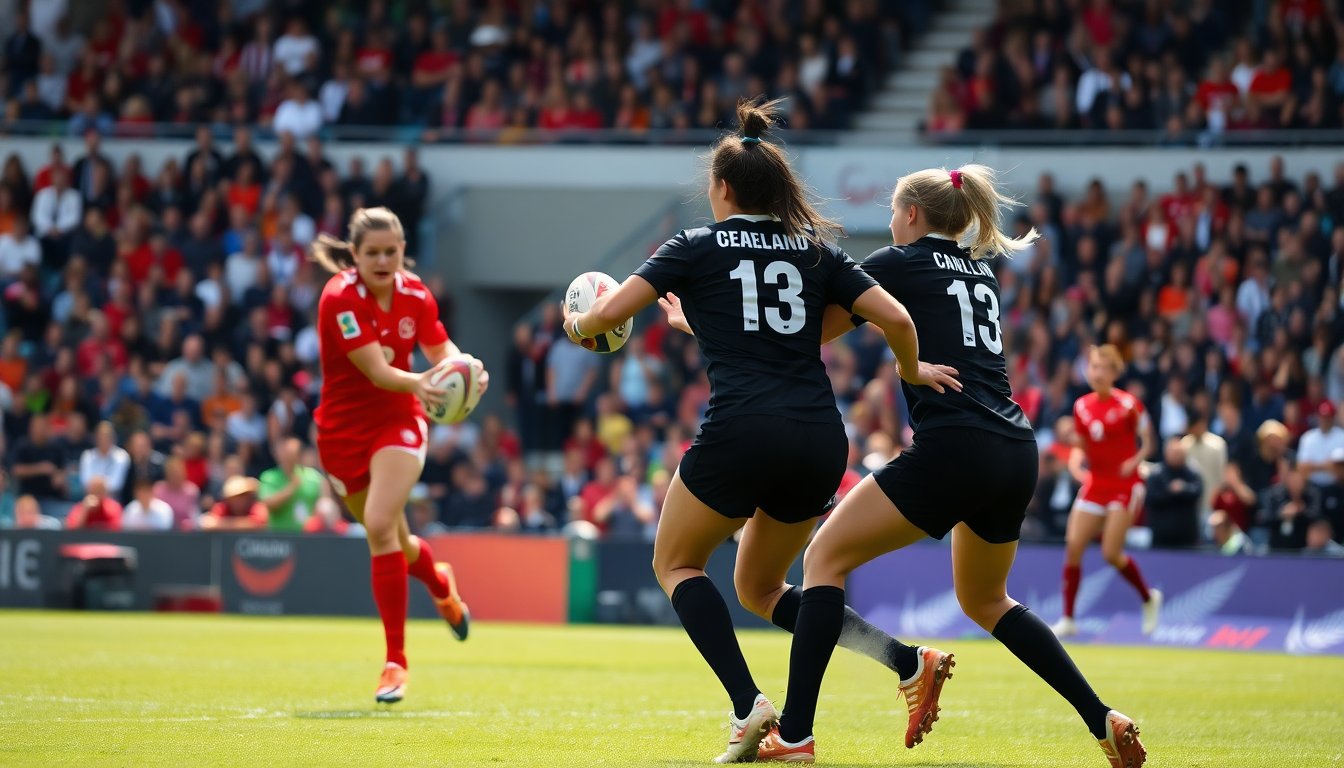Table of Contents
The Women’s Rugby World Cup is experiencing a pivotal transformation as Canada defeats New Zealand, the reigning champions, in a dramatic semifinal match held in Bristol, England. With a score of 34-19, Canada not only secured its spot in the final but also demonstrated a significant evolution in its rugby capabilities, ending New Zealand’s eight-year championship streak.
Under the guidance of coach Kevin Rouet, the Canadian team exhibited a blend of tenacity and strategy that impressed spectators. Their path to the final is characterized by skilled plays and unwavering determination, setting the stage for an exciting showdown next weekend.
Canada’s Dominant Performance
From the kickoff, Canada adopted an aggressive approach that surprised New Zealand. By halftime, Canada had established a commanding lead of 24-7, with forwards and backs collaborating effectively to dismantle the Black Ferns’ defense. Captain Alex Tessier was crucial in securing a fifth try shortly after the break, further extending Canada’s lead.
Strategic Insights
The Canadian forwards, particularly influential lock Sophie de Goede, played a vital role in counteracting New Zealand’s physicality. Their ability to control the ball and maintain possession was essential in creating scoring opportunities. Meanwhile, the backs, led by scrum-half Justine Pelletier, effectively outmaneuvered their opponents, showcasing a level of creativity previously unseen in their encounters with the Black Ferns.
This semifinal marked a historic milestone for Canada, as it was their first-ever victory against New Zealand in the World Cup, and only the third time the Black Ferns have faced defeat in tournament history. New Zealand, previously unbeaten in knockout stages for 34 years, suffered a shocking loss that highlighted the competitive nature of women’s rugby.
Analyzing the Match Dynamics
Despite New Zealand entering the match with a leading tackle success rate of 93 percent, their performance declined as they missed 18 tackles in the first half alone. This lack of precision allowed Canada to seize opportunities, particularly following two critical errors by fullback Renee Holmes, setting the tone for Canada’s explosive start.
The sequence leading to Canada’s opening tries involved a series of strategic plays, including a well-timed chip from fly-half Taylor Perry, resulting in a converted try from Pelletier, followed by another remarkable score from left wing Asia Hogan-Rochester. These moments exemplified Canada’s superior tactics and execution.
New Zealand’s Response
While New Zealand attempted to rally with tries from flanker Liana Mikaele-Tu’u and young wing Braxton Sorensen-McGee, the pressure to catch up only benefitted Canada’s defensive strategy. Canada’s willingness to concede penalties created a controlled environment, allowing them to dictate the game’s pace.
In the closing moments, Sophie de Goede executed a final penalty kick, sealing the victory and epitomizing the pride and relief felt by the Canadian team. “We understood it would take an extraordinary performance to achieve this,” de Goede remarked, reflecting on the team’s journey. Their triumph not only signifies a historic win but also serves as a testament to the growth and potential of women’s rugby in Canada.
Looking Ahead to the Final
As Canada prepares for its second World Cup final appearance, having lost the first to England in 2014, anticipation mounts. The team’s ability to focus on the task ahead, as emphasized by Coach Rouet, is crucial. “We need to stay grounded and finish the job,” he stated, echoing the sentiments of a team eager to etch their name in rugby history.
Under the guidance of coach Kevin Rouet, the Canadian team exhibited a blend of tenacity and strategy that impressed spectators. Their path to the final is characterized by skilled plays and unwavering determination, setting the stage for an exciting showdown next weekend.0


